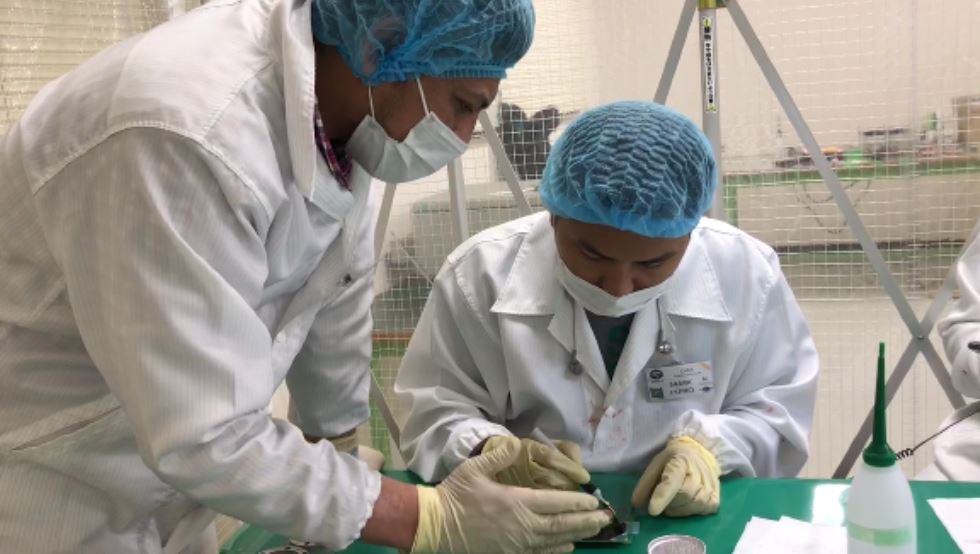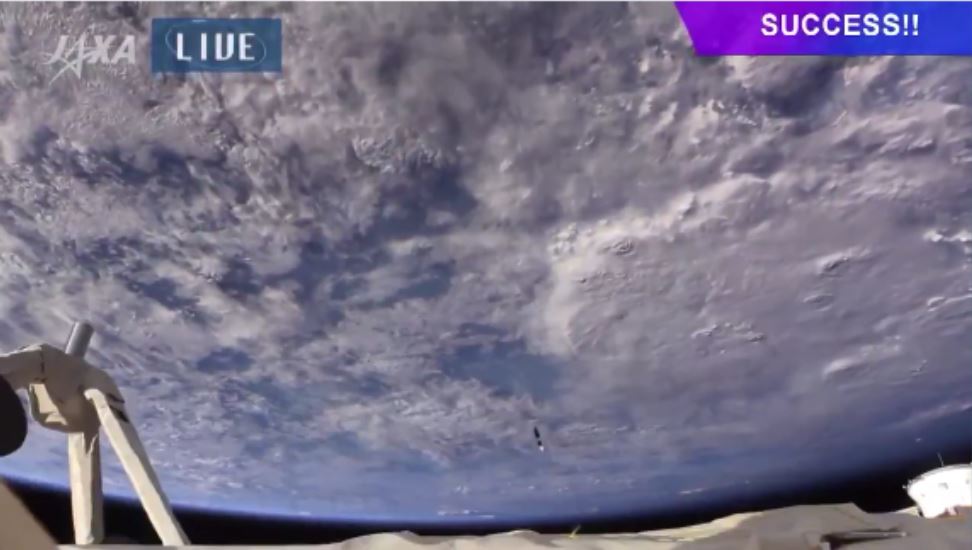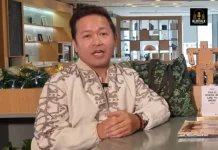
Filipino space engineers Izrael Zenar Bautista (UP Diliman), Mark Angelo Purio (Adamson University), and Marloun Sejera (Mapúa University) shared their journey of building the Philippines’ Maya 2 cube satellite during a recent talk show of the Department of Science and Technology-Science and Technology Information Institute (DOST-STII) and Centro Escolar University (CEU) Media and Communication Department.
The three space student-engineers of the Space Technology and Applications Mastery, Innovation and Advancement (STAMINA4Space) Program implemented by the Department of Science and Technology-Advanced Science and Technology Institute (DOST-ASTI) and the University of the Philippines Diliman spoke about their experience during the Centrong AgTek (Agham at Teknolohiya), an experimental online show which went live on July 16.
The three space engineers are scholars at Kyushu Institute of Technology (Kyutech) under the STAMINA4Space Program.
“Pinadala kaming tatlo, essentially para ma-train at matutunan namin ang paggawa ng cube satellite para in the long run, makapagdevelop na tayo ng sarili nating satellite rito sa Pilipinas and we can do that at a lower cost,” said Engr. Purio.
(Three of us were deployed essentially to be trained in developing cube satellites so that in the long run we can build on our own at a lower cost.)
Engr. Purio further explained that developing satellites are beyond giving the country a huge pride but it is more of investing long-term as those captured images by these satellites could provide substantial information and data towards better decision and policy-making, particularly in the field of agriculture, disaster preparedness and management, national security, urban planning, and environmental conservation.
Maya-2 is a 1.3kg CubeSat equipped with a camera for image and video capture, an Automatic Packet Reporting System Message Digipeater (APRS-DP), attitude determination and control units for active attitude stabilization and control demonstrations, Perovskite solar cells and Latchup-detection chip.
The Philippines’ second cube satellite (CubeSat), Maya-2, was successfully launched to the International Space Station (ISS) on February 21, 2021, aboard the S.S. Katherine Johnson Cynus spacecraft, the final step before the satellite went through deployment by the ISS in March.
Maya-2 is the successor to the Maya-1 which ended its 2-year mission and returned to earth in November 2020.

The Filipino engineers spoke about the once-in-a-lifetime experience of building the satellite.
“Nagkataon lang talaga na nabigyan ng opportunity pero malaking factor kaya ko rin tinanggap ay iyong long-term impact na mage-gain ng Pilipinas if we enhance our space programs, and with that, it is a great honor to be one of the pioneers in this field sa atin,” shared by Engr. Bautista.
(I am just fortunate that I get the opportunity but the huge factor in considering to be part of this project is the chance to enhance our country’s space program and it is a great honor to be one of the pioneers in this field.)
On the other hand, Engr. Purio shared that during his time in college at Adamson University, this was where the Philippines started to invest in space technologies and programs. When the offer and opportunity came to be part of the Maya-2 cube satellite project, he saw the huge opportunity to learn a lot and share and apply it here in our country.
Engr. Sejera believes that the chance to exchange ideas and experience with other races was hard to pass up.
“To be honest, it is not difficult to accept the offer to be part of this project because it is an honor and privilege to pick the brains of the greatest experts and engineers abroad and witnessing firsthand how a country like Japan runs and implements its space programs that hopefully we can replicate here in the Philippines,” said Engr. Sejera.

Engr. Sejera shared that it was a great learning experience when all of them got the opportunity to work with students and experts from other countries. Despite their differences when it comes to work ethic and principle, they were able to blend all that character and personality to achieve their common goal, which is to build a satellite.
Engr. Purio agreed with Engr. Sejera. He added that as cliché as it sounds, building a satellite was a total team effort.
“Each team member was assigned to a specific component of the satellite and if you failed, it might affect the entire satellite,” explained Engr. Purio.
He said that for the duration of the project, there were challenges and bumps on the road to building a satellite but they were able to draw strength from one another by leveraging the strength of others and compensating for their respective weaknesses.
For the student-engineers, it was a chance of a lifetime when they were granted scholarships and given the chance to work and build the Maya-2 cube satellite. Sharing and honing their knowledge and skills for a research project could have an enormous impact on various industries in years to come.

“Kaming tatlo, nagsimula lang din kami as normal students pero nangarap kami at noong nagkaroon ng opportunity, we grabbed it immediately. Sa lahat naman ng ginagawa natin, palagi naman may obstacle but you have to trust the process. May time na mahihirapan at mafrufrustrate ka pero iyong lesson from that will help you to grow and have better approach once the challenges come to you again,” said Engr. Purio
(We are just normal students in the beginning but we pursue our dreams. When the opportunity came, we grabbed it immediately. In all the things that we do, there is always an obstacle but you have to trust the process. There are times you will get frustrated but it will give you lessons that will help you to grow and have a better approach once the challenges come to you again.)
For Sejera, if you want to achieve your dream, you have to seek opportunities. If you cannot find that in your place, you have to explore somewhere else and believe in it; there are tons out there.
“Nothing worth doing is easy so kapag nahihirapan kayo, doon mo masasabi na worth it talaga ginagawa mo. Sa case namin when we are building the satellite, 16 hours a day kami nagtratrabaho, halos walang tulog minsan, pero balewala iyon sa amin kasi nakikita namin na iyong end product na ito can help my country and that’s the best feeling I could imagine,” said Engr. Bautista.
(Nothing worth doing is easy. So, if we have a hard time in things that we do, it means that it is all worth it. In our case, when we are building the satellite, we have been working 16 hours a day but we don’t care because we see the end product and we believe that it could help my country and that’s the best feeling I could imagine.)
He also said that opportunity comes to those prepared, like what they did. They soak up all the knowledge that they can and take the courses for certain skills, so when the opportunities come, it is really for them because they meet all the requirements. After all, they prepared.
The Centrong AgTek (Agham at Teknolohiya) is an online show that seeks to deliver fresh, informative, relevant, and entertaining content that would enable primarily young Filipinos to appreciate and understand the practical benefits of science, technology, and innovation in various aspects of our lives. This initiative is part of the Science Journalism advocacy of DOST-STII to nurture a culture of science in the country. To watch this episode, please visit the Science Journo Ako Facebook Page.
Learn more about the Maya-2 cube satellite on the STAMINA4Space site.
SEND CHEERS in the comments below to the 3 Filipino space engineers for sharing their stories of buildingthe Philippines-made Maya cube satellite.
Good News Pilipinas is celebrating its 15th Anniversary in 2021 by giving away prizes! Subscribe to our Good News Pilipinas! TV YouTube channel and enter the raffle by sending us an email to editor@goodnewspilipinas.com










